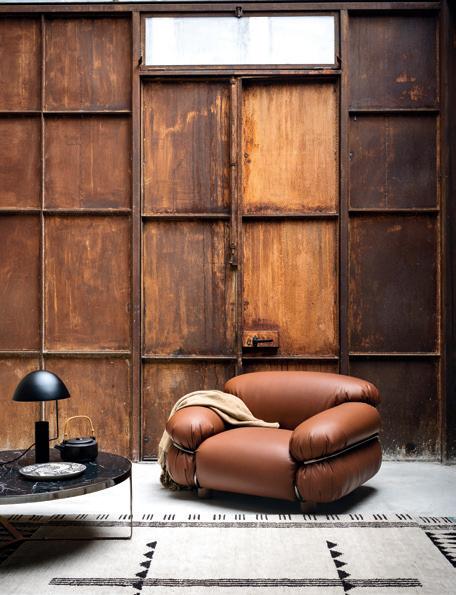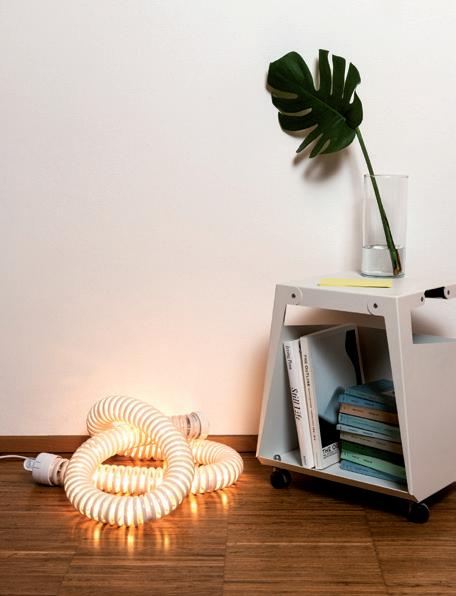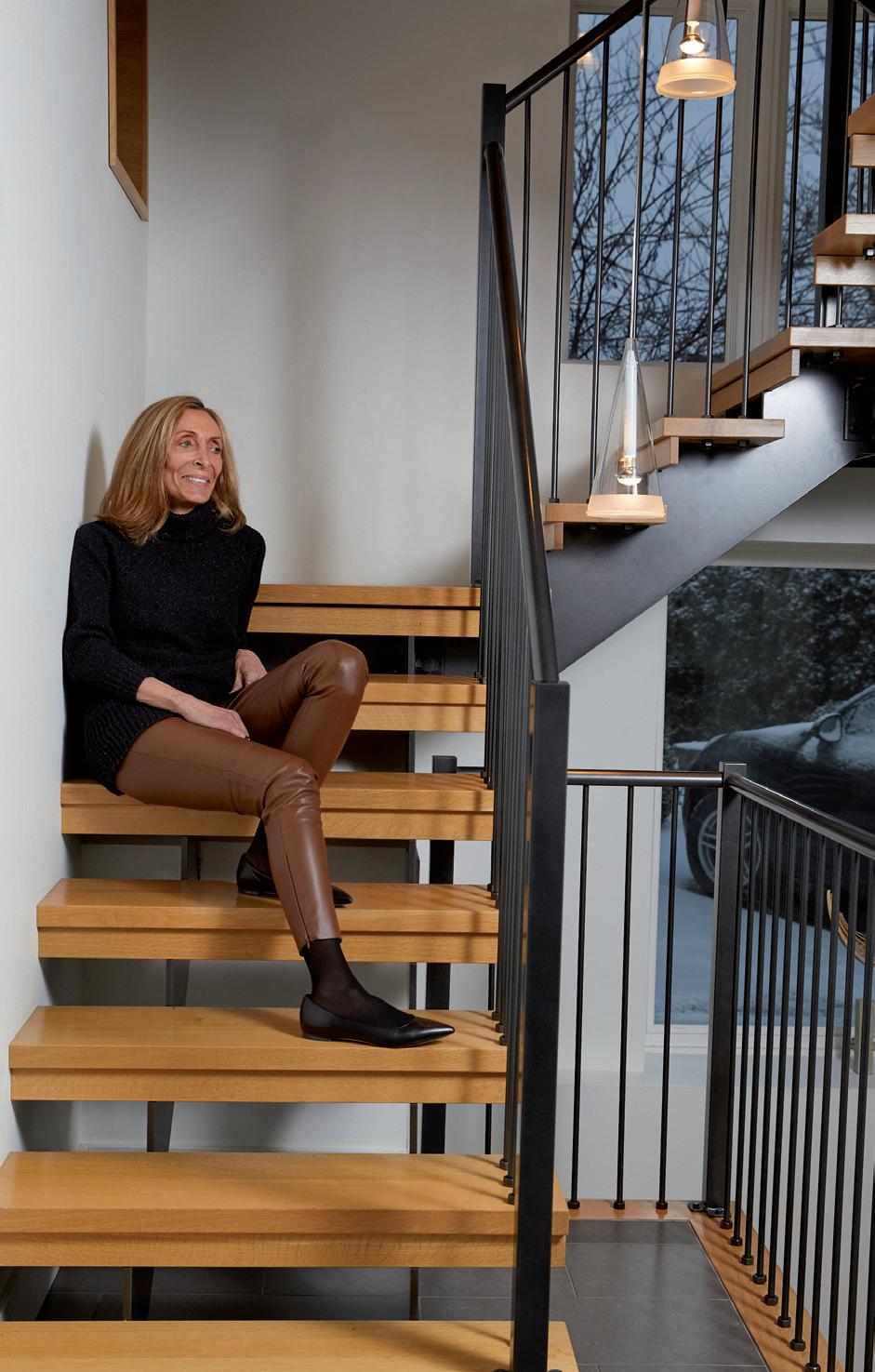
7 minute read
PEOPLE
The new website on the architect Gianfranco Frattini, containing the digital version of his historical archives, has just been completed. What are the goals?
My brother and I had decided to implement this project some time ago, since we have the responsibility for the safekeeping of this archival material: we wanted to organize it and make it accessible. The first step was to put it online with a dual function: for reference and information, but also as a tribute to our father’s work. He is known for several design pieces, but his range of projects was actually much wider. The goal is to publish his whole career, from product design – furniture and objects – to interiors and architecture. The potentialities are infinite: the digital archive becomes a document open to all those who are interested in knowing if a piece they own, or want to purchase, may be a work that can be attributed to Gianfranco Frattini; for us, it is an opportunity to interact with the world of vintage, and with those who distribute the historic pieces. People often contact us with images of products we do not have in the archives, because not everything was documented (there are surely prototypes or pieces made for projects that no longer exist, but the furnishings have survived, or still exist in photographs). We can offer an informed opinion about authenticity based on what we know about the history, methods and aesthetics of our father.
Emanuela Frattini Magnusson
FOUNDER of EFM DESIGN
text by Veronica Orsi
THE DAUGHTER OF GIANFRANCO FRATTINI, ARCHITECT WHO CONTRIBUTED TO WRITE THE HISTORY OF ITALIAN DESIGN IN THE 1950S AND 1960S HAS INHERITED HIS PASSION FOR DESIGN, AND AN APPROACH WE MIGHT DEFINE AS BOTH ETHICAL AND PRAGMATIC. LIKE HER FATHER, SHE MOVES FLUIDLY “FROM THE SPOON TO THE CITY,” BUT HER GEOGRAPHIC COORDINATES ARE IN MILAN AND NEW YORK, WHERE SHE FOUNDED HER MULTIDISCIPLINARY STUDIO EFM DESIGN, AND WHERE OVER THE LAST 20 YEARS SHE HAS GAINED EXPERIENCE WITH MOMA, BLOOMBERG AND RELATED COMPANIES. TODAY, TOGETHER WITH HER BROTHER, SHE DEDICATES A DIGITAL HISTORICAL ARCHIVE TO HER FATHER, WITH WHOM SHE TOOK HER FIRST STEPS IN THE PROFESSION: A CULTURAL PROJECT THAT HAS LED TO VARIOUS REISSUES OF HISTORIC PRODUCTS, IN COLLABORATION WITH ITALIAN COMPANIES. WE HAD A ‘VIRTUAL’ CONVERSATION WITH EMANUELA FRATTINI MAGNUSSON, ZOOMING FROM HER HOME IN NEW YORK
Has this process led to recent reissues in collaboration with contemporary design brands?
The web development has been parallel and independent from reintroductions. We have been contacted directly by the companies, such as Tacchini, Poltrona Frau, Acerbis. For us, a cultural operation began in a spirit of tribute to our father’s work. Tacchini approached us in 2014. They had discovered the lounge chair which would be reintroduced as Agnese at a vintage dealer in Brianza; they asked us if it would be possible to put it back into production, and this fruitful collaboration is continuing to this day. A couple of years ago architect Marco Romanelli, a close friend who recently passed away as well as a great expert on design
AGNESE armchair by Tacchini, design Gianfranco Frattini
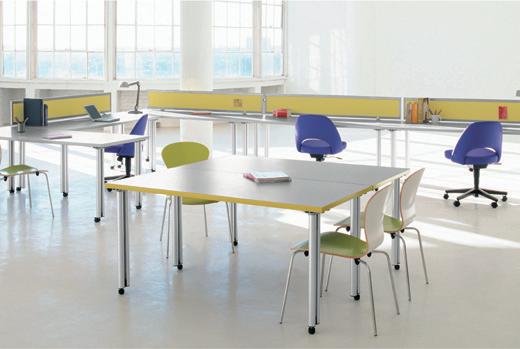

PROPELLER collection by Knoll, EFM Design
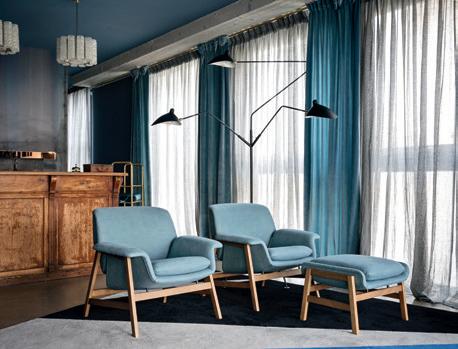
history, suggested a reissue of the Albero bookcase as part of the Icons collection which he had created for Poltrona Frau. This was the first piece reintroduced by the company, followed by the Turner bookcase and, last year, by the Kyoto table, offered in black as well as beech, finishes with which the piece was conceived in the 1970s: absolutely timeless.
How will the archive project evolve?
We have a big project in the making: we have been contacted by an agency, based in Denmark and the United States, that represents archives of historic designers; they have recently begun to work on a part of the archives of Charles & Ray Eames, and for us they will focus on new partnerships. Our father has such a vast range of products, which are still very contemporary, and it will be a great satisfaction to see them come back to life in projects designed today.
What are the factors that go into a reissue?
There has to be a cultural and intentional affinity with the manufacturing company: those who contact us, or turn to the archives of other historic designers, are undoubtedly interested first of all in the value and protection of design heritage. The originality of the piece has to be maintained, but I also think that certain modifications, that can be dictated by technology or today’s changed functional needs, would have been agreed to by my father. The Sesann sofa, for example, was originally very low: with Tacchini we have raised it by two centimeters, a factor that does not change the image, but makes the piece more comfortable and usable. Today’s upholstery uses different types of foam that are more durable and ecological; and it is important to conduct research on finishes and fabrics. These are aspects that make products more up-to-date and therefore livable, without altering the original intent of the design.
Photo © Andrea Ferrari
In the collections of companies and interior design, we are seeing more juxtapositions of historic and contemporary items. Why is this happening, in your view?
I think it is the natural continuation of phenomena that already existed. If we look at Artek, Vitra or Knoll, certain pieces by Mies van der Rohe, Eero Saarinen, Charles & Ray Eames, have never gone out of production. They are classics that have survived since the 1930s, 1940s and 1950s, and they are still utilized in many projects. In a certain sense, they have paved the way for the rediscovery of other designers, perhaps less famous but equally representative of their time. So companies are turning to the archives of that period to find products to reissue. Another reason is a changed cultural climate. Today we live in a much more fluid and eclectic world than in the past decades, when design canons were more rigorous and everything had to comply with a certain style or aesthetic. As always, what happens in interiors is influenced by other cultural areas like fashion (though design has much longer cycles than fashion’s seasons): today it is normal to wear a Gap t-shirt with a Prada skirt, or a vintage dress with a contemporary jacket. We are much freer in our acceptance of combining different periods, styles and materials. This also reflects in interiors: there is the desire for personalization, for the insertion of unique things.
Speaking of contaminations, you are an architect who by training and experience exists halfway between Milan and New York...
Exactly. In cultural terms I grew up in Italy: I graduated in Milan, worked with my father during my studies, and then briefly with Matteo Thun; I learned the profession in that period, a context in which architects in Italy were more involved with the mental path of design, without worrying to much about specializing in a certain scale or typology. I worked in London for a couple of years, and then in the States: when I arrived in New York I had no clients, so I began to make my own products, promoting them at trade fairs, and started working with MoMA; then came the first commissions, and more projects for interiors and product design. After about 20 years of experience, I effectively often acted as creative director, until the opportunity came along to work for Bloomberg as Global Head of Design. After that experience in recent years I have collaborated with Related, a real estate development firm responsible for the Hudson Yards project in New York. As this is how I was educated I have tried to shape my work in a way known here as a “design studio.” In America the big split is between architects who do “core & shell” and those who do interiors: I don’t agree with this distinction, because when you think about a building you should envision it as a whole, considering its use in order to shape the interiors. This way of thinking is changing, fortunately, and many large architecture firms now have interior design departments.
Photo © Federico Villa
BOALUM lamp by Artemide, design Gianfranco Frattini MAESTRO table by Acerbis, design Gianfranco Frattini
You took your first steps in design together with your father. What did you inherit, in professional terms?
My father always said that he was not interested in shaping a project according to a preconceived notion, but simply started with the idea of doing the right thing for that particular program. I believe this approach has remained with me. Together with the attitude of looking at large and small scales in the same way, recognizing that both are fundamental, and one influences the other. My father’s generation grew up with the motto “from the spoon to the city,” and for me it is still valid.
Photo © Andrea Ferrari

